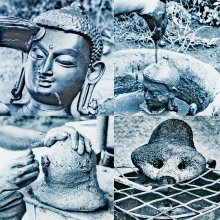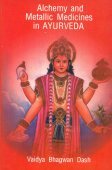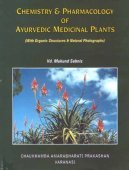Cow dung: 4 definitions
Introduction:
Cow dung means something in Buddhism, Pali, Hinduism, Sanskrit. If you want to know the exact meaning, history, etymology or English translation of this term then check out the descriptions on this page. Add your comment or reference to a book if you want to contribute to this summary article.
Images (photo gallery)
In Hinduism
Vastushastra (architecture)
Source: Shodhganga: Elements of Art and Architecture in the Trtiyakhanda of the Visnudharmottarapurana (vastu)Cow-dung is traditionally used as fuel for fire in machines that shapes the dough of Clay, in the process of creating Bricks which is an important Material used for the Construction of Walls and Temples, according to the Viṣṇudharmottarapurāṇa, an ancient Sanskrit text which (being encyclopedic in nature) deals with a variety of cultural topics such as arts, architecture, music, grammar and astronomy.—The procedure of making bricks is very nicely explained in the Viṣṇudharmottarapurāṇa. [...] The dough of the clay should be shaped in a machine which should be one hand in length, half a hand in breadth and one forth hand in height. In that machine the clay should be baked in the fire of wood, cow-dung and grass and thus bricks got prepared. These bricks should be made in proper shape and be arranged skillfully in proper place.

Vastushastra (वास्तुशास्त्र, vāstuśāstra) refers to the ancient Indian science (shastra) of architecture (vastu), dealing with topics such architecture, sculpture, town-building, fort building and various other constructions. Vastu also deals with the philosophy of the architectural relation with the cosmic universe.
Yoga (school of philosophy)
Source: ORA: Amanaska (king of all yogas): A Critical Edition and Annotated Translation by Jason BirchCow-dung is denoted by the Sanskrit term Gomaya, according to the Haṭhapradīpikā 3.90.—Accordingly, “Pure ashes, which were produced by burning cow-dung (gomaya), [should first be] placed in water. After having sex in which Vajrolī Mudrā [was performed], the woman and man, who are sitting comfortably and have finished love making, [should] immediately smear their own bodies [with the ashes mixed with water]

Yoga is originally considered a branch of Hindu philosophy (astika), but both ancient and modern Yoga combine the physical, mental and spiritual. Yoga teaches various physical techniques also known as āsanas (postures), used for various purposes (eg., meditation, contemplation, relaxation).
Ayurveda (science of life)
Agriculture (Krishi) and Vrikshayurveda (study of Plant life)
Source: Shodhganga: Drumavichitrikarnam—Plant mutagenesis in ancient IndiaCow Dung (denoted by the Sanskrit term Gomaya) is used in certain bio-organical recipes for plant mutagenesis, such as dwarfing a plant, according to the Vṛkṣāyurveda by Sūrapāla (1000 CE): an encyclopedic work dealing with the study of trees and the principles of ancient Indian agriculture.—Accordingly, “A plant which is not too tender should be cut at its stem and then slightly burnt. Thereafter it should be smeared with the mixture of clarified butter, cow dung (gomaya), rock salt, honey and flesh. A nail should then be driven in the root in a slanting manner. The plant then should be watered beautiful branches and without fail produces fruits even in a dwarf state”.

Āyurveda (आयुर्वेद, ayurveda) is a branch of Indian science dealing with medicine, herbalism, taxology, anatomy, surgery, alchemy and related topics. Traditional practice of Āyurveda in ancient India dates back to at least the first millenium BC. Literature is commonly written in Sanskrit using various poetic metres.
In Buddhism
Mahayana (major branch of Buddhism)
Source: Brill: Śaivism and the Tantric Traditions (mahayana)Cow-dung is used for drawing a Maṇḍala while performing a sacred bathing ritual, according to the seventh chapter of the Suvarṇaprabhāsottamasūtra.—In chapter 7, the Sarasvatīparivarta, the goddess Sarasvatī grants her support to the Dharma preacher through the gift of eloquence, and presents a bathing ritual with enchanted herbs for him and his audience in order to appease all disturbances. It is promised that, invoked by praise, Sarasvatī herself will appear and remove all diseases and difficulties. The ritual instructions prescribe that one should pound herbs and consecrate the powder with mantras at the time of the Puṣya constellation. A maṇḍala should be drawn with cow-dung, flowers should be scattered and gold and silver vessels filled. Four armed men and four well-adorned maidens should be placed there holding pots in their hands, thus accomplishing the protective sealing of the boundaries (sīmābandha). One should use incense, music, umbrellas, flags, banners, mirrors, arrows, spears and dhāraṇī-spells, and in due course bathe behind an image of the Buddha.

Mahayana (महायान, mahāyāna) is a major branch of Buddhism focusing on the path of a Bodhisattva (spiritual aspirants/ enlightened beings). Extant literature is vast and primarely composed in the Sanskrit language. There are many sūtras of which some of the earliest are the various Prajñāpāramitā sūtras.
See also (Relevant definitions)
Partial matches: Cow.
Full-text (+450): Gomaya, Karisha, Bhumilepana, Goshakrit, Govish, Gokrita, Upanjana, Vibhuti, Pava, Gohanna, Gopurisha, Chagana, Marunda, Upalepana, Aranyopala, Gomayottha, Karishagni, Pancagavya, Upalip, Guimtho.
Relevant text
Search found 126 books and stories containing Cow dung; (plurals include: Cow dungs). You can also click to the full overview containing English textual excerpts. Below are direct links for the most relevant articles:
Sushruta Samhita, volume 4: Cikitsasthana (by Kaviraj Kunja Lal Bhishagratna)
Chapter X - The medical treatment of major cutaneous affections
Chapter IV - The medical treatment of nervous disorders
Chapter XVI - The medical treatment of Abscesses and Tumours
Folk Tales of Gujarat (and Jhaverchand Meghani) (by Vandana P. Soni)
Chapter 19 - Jad Pan Ni Puja < [Part 3 - Kankavati]
Chapter 3 - Bhai! < [Part 1 - Saurashtra ni Rashdhar]
Chapter 34 - Sonbai < [Part 4 - Dadajee Ni Vato]
The Devi Bhagavata Purana (by Swami Vijñanananda)
Chapter 11 - On the description of the greatness of the three kinds of Bhaṣmas < [Book 11]
Chapter 23 - On the Tapta Kṛcchra vrata and others < [Book 11]
Chapter 5 - On the Rudrākṣam rosaries < [Book 11]
Shaiva Upanishads (A Critical Study) (by Arpita Chakraborty)
14. Method of Preparation of Holy Ash (Bhasma) < [Chapter 2 - Greatness of Bhasma and Dhāraṇa]
13. Cowdung-Products of the cow as ‘Vidyā’ < [Chapter 2 - Greatness of Bhasma and Dhāraṇa]
15. Four-fold method of preparing Bhasma < [Chapter 2 - Greatness of Bhasma and Dhāraṇa]
Garga Samhita (English) (by Danavir Goswami)
Verse 3.1.27 < [Chapter 1 - The Worship of Śrī Girirāja]
Verse 3.1.15 < [Chapter 1 - The Worship of Śrī Girirāja]
Chaitanya Bhagavata (by Bhumipati Dāsa)
Verse 1.14.41 < [Chapter 14 - The Lord’s Travel to East Bengal and the Disappearance of Lakṣmīpriyā]
Verse 1.5.29-30 < [Chapter 5 - Eating the Mendicant Brāhmaṇa’s Offerings]
Verse 1.5.13 < [Chapter 5 - Eating the Mendicant Brāhmaṇa’s Offerings]
Related products


